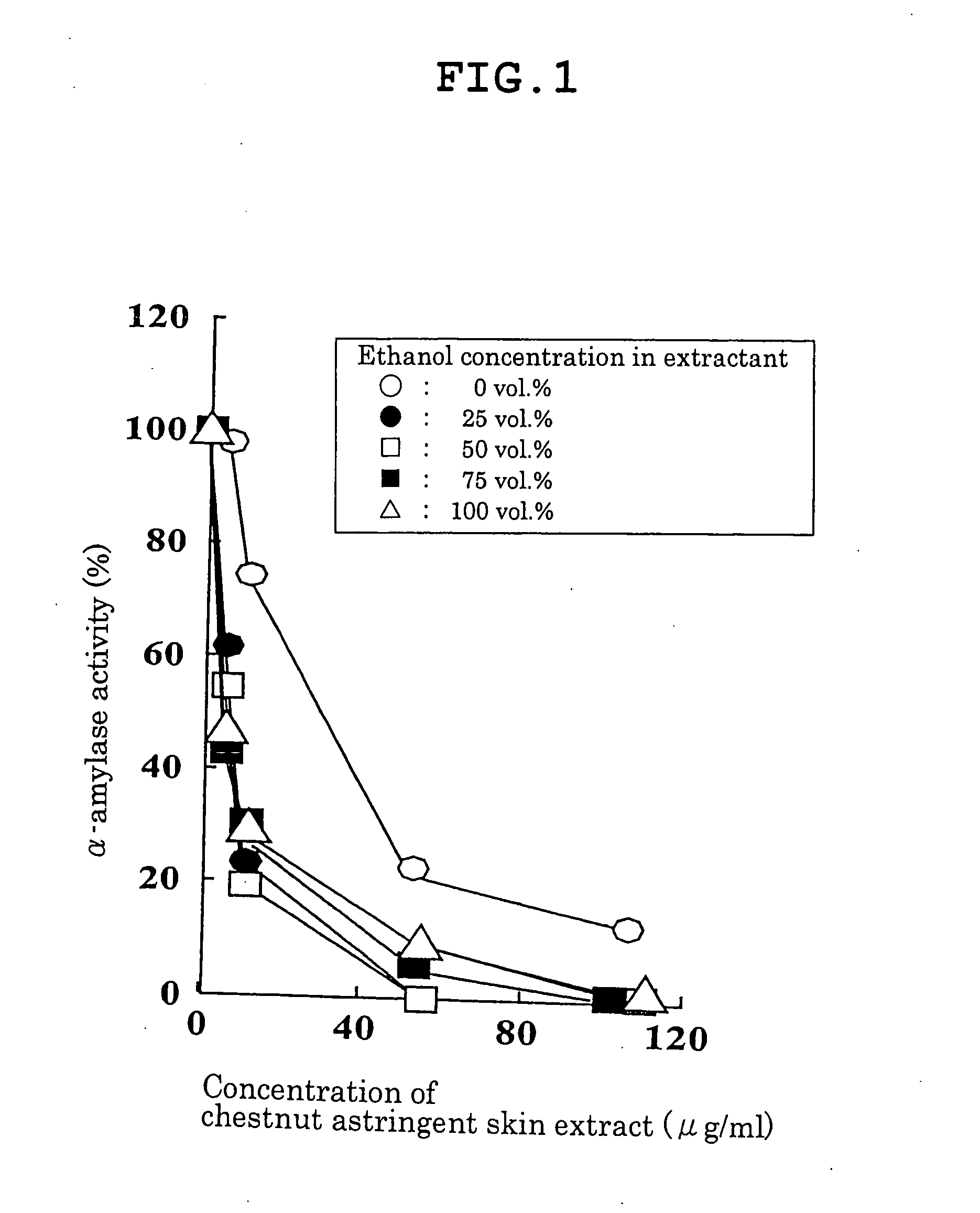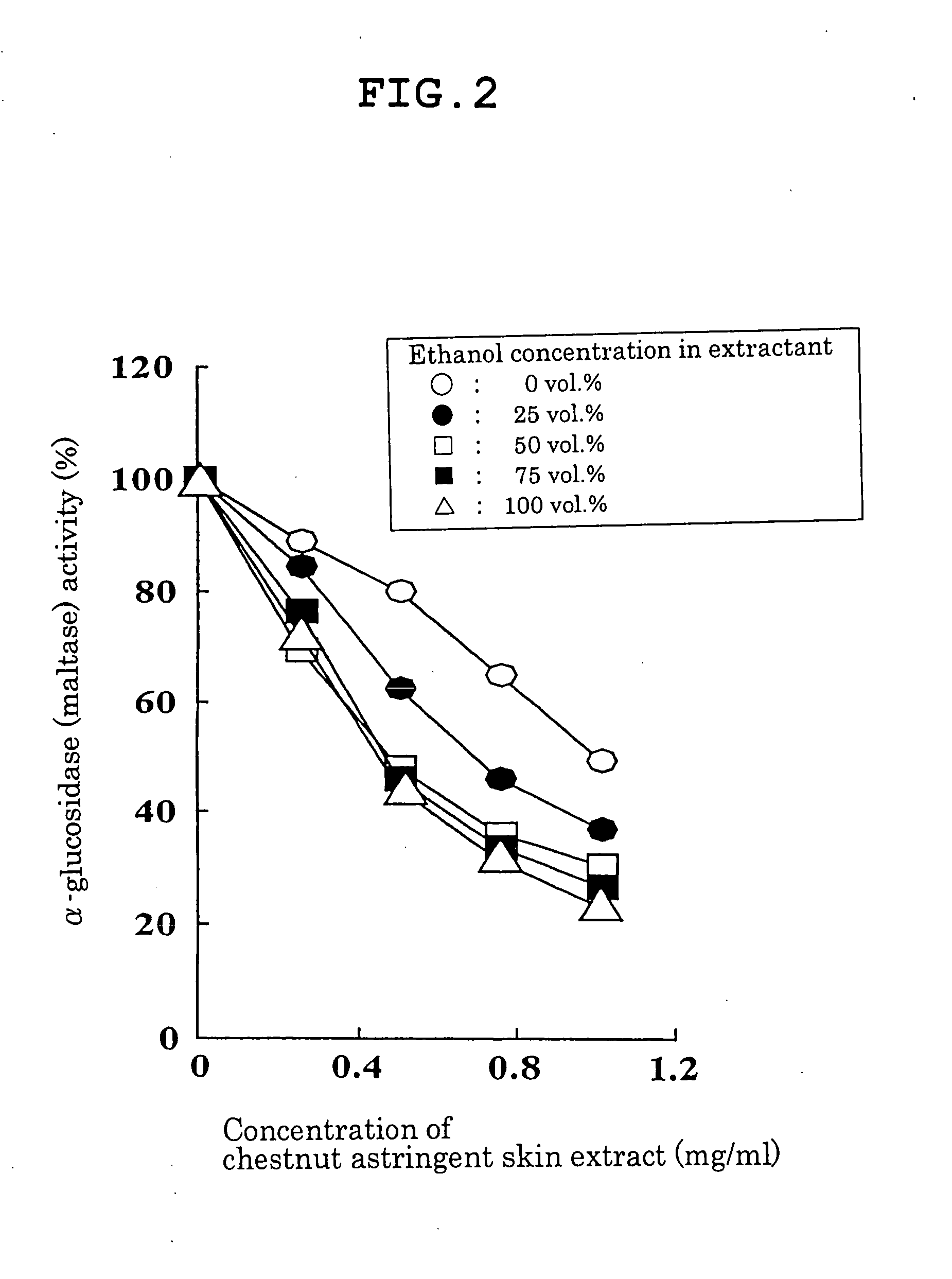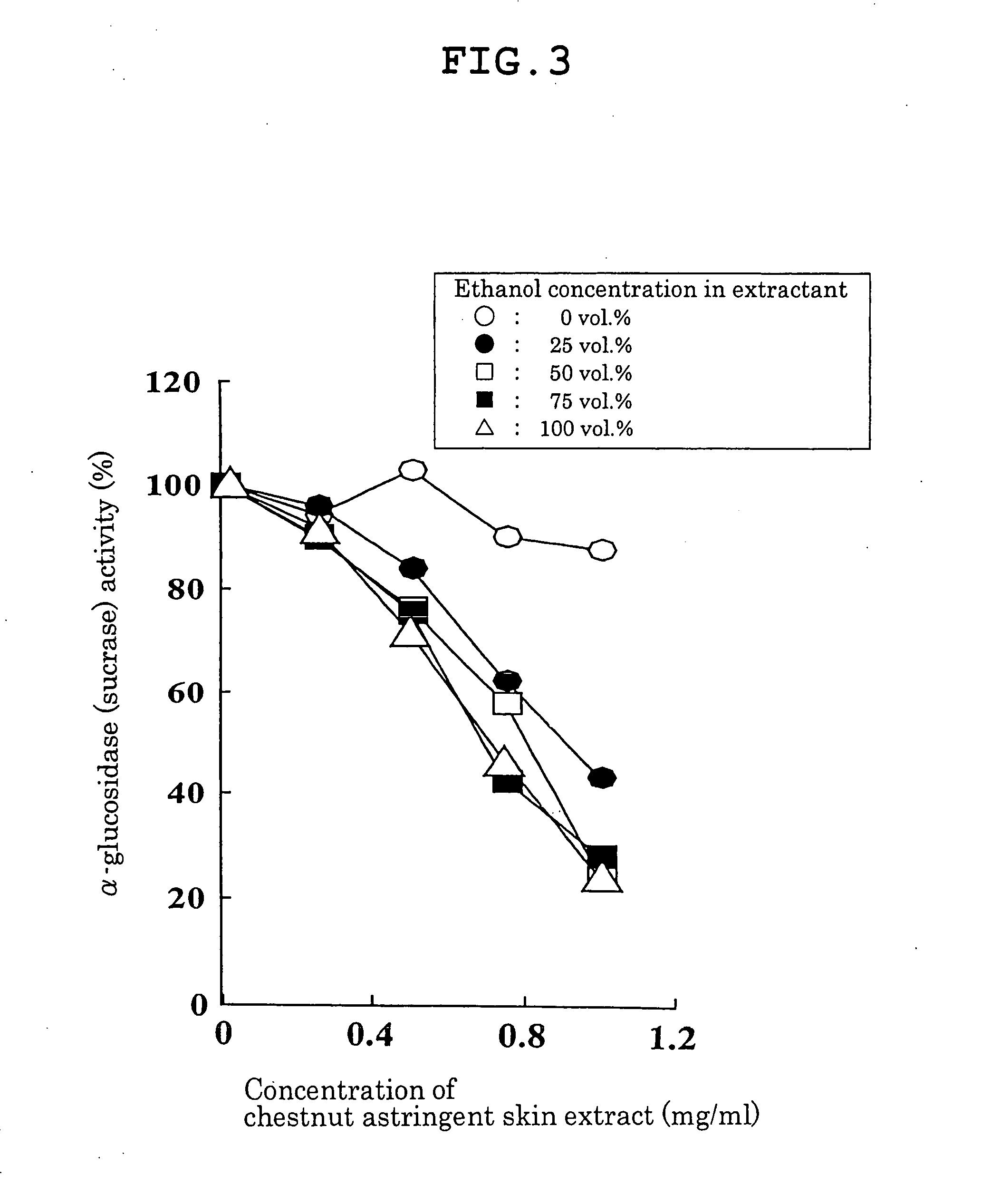Carbohydrase Inhibitors Derived From Chestnut And Use Thereof
a carbohydrase inhibitor and chestnut technology, applied in the field of chestnut carbohydrase inhibitors, can solve the problems of not being satisfied with known inhibitors, and achieve the effect of providing stably
- Summary
- Abstract
- Description
- Claims
- Application Information
AI Technical Summary
Benefits of technology
Problems solved by technology
Method used
Image
Examples
preparation example 1
Chestnut Astringent Skin Extract (Ethanol Concentration in Extractant: 100 vol. %)
[0082] One hundred milliliters of 100 vol. % ethanol was added to 50 g of the chestnut astringent skin, followed by stirring at 35° C. for 15 hours. The mixture was then centrifuged at 3000 g for 15 minutes, and the resulting supernatant was concentrated in a rotary evaporator and lyophilized, to thereby obtain 1.59 g of an ethanol extract of chestnut astringent skin (lyophilized product).
preparation example 2
Chestnut Astringent Skin Extract (Ethanol Concentration in Extractant: 75 vol. %)
[0083] Using 75 vol. % aqueous ethanol solution but not 100 vol. % ethanol as an extractant, 50 g of the chestnut astringent skin was subjected to the same procedure as in Preparation Example 1, to thereby obtain 2.45 g of an aqueous ethanol extract of chestnut astringent skin (lyophilized product).
preparation example 3
Chestnut Astringent Skin Extract (Ethanol Concentration in Extractant: 50 vol. %)
[0084] Using 50 vol. % aqueous ethanol solution but not 100 vol. % ethanol as an extractant, 50 g of the chestnut astringent skin was subjected to the same procedure as in Preparation Example 1, to thereby obtain 2.70 g of an aqueous ethanol extract of chestnut astringent skin (lyophilized product).
PUM
 Login to View More
Login to View More Abstract
Description
Claims
Application Information
 Login to View More
Login to View More - R&D
- Intellectual Property
- Life Sciences
- Materials
- Tech Scout
- Unparalleled Data Quality
- Higher Quality Content
- 60% Fewer Hallucinations
Browse by: Latest US Patents, China's latest patents, Technical Efficacy Thesaurus, Application Domain, Technology Topic, Popular Technical Reports.
© 2025 PatSnap. All rights reserved.Legal|Privacy policy|Modern Slavery Act Transparency Statement|Sitemap|About US| Contact US: help@patsnap.com



